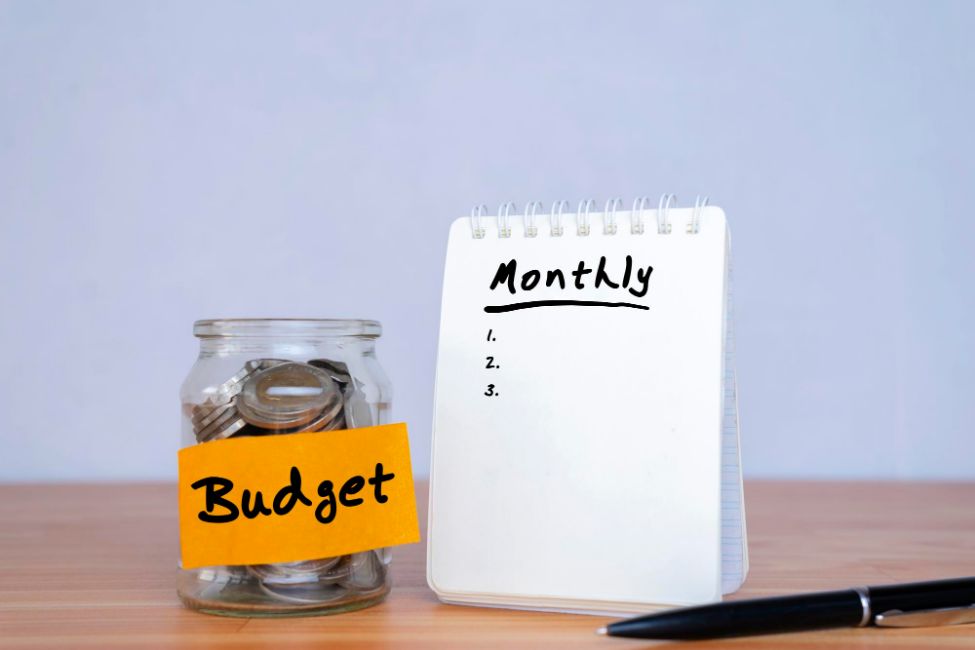Saving money when never-ending expenses get in your way to build your savings is a real struggle, right? And the thought of cutting expenses to save some money always seems impossible.
Obviously, who wants to leave the joy of spending more and enjoying it to bits? However, savings requires you to sacrifice most things, but following the mentioned eight money-saving strategies, you can save more and spend less effortlessly. So, let’s dig in…
1. Prepare Yourself to Practice Savings
Our mind never likes the idea of saving money or putting an amount for later use. We like being in our comfort zone, and cutting expenses is way out of our league. Therefore, preparing yourself is important before you practically start savings. A few things that you can do are:
- Start thinking more logically: Whenever you step out of your home to purchase something, simply consider things based on the value they provide you. You can ask yourself, " Is this particular thing adding value to my life?" or "Buying it could be beneficial?"
- Try mindfulness/meditation to keep your thoughts aligned: Practicing mindfulness or meditation will help you relax when the pressure of cutting expenses increases, and it also helps you focus on your saving goals.
- Keep a journaling routine: At the end of the day, make sure you write your daily expenditure and ask questions to yourself such as, ‘How much extra money I spent today?’, ‘Does XYZ thing added any value?’, ‘Did I save any money today?’
Moreover, once you start practicing these things, your mind will ultimately adopt the money-saving habit and prevent you from spending on unnecessary items.
2. Keep Track of Your Expenses
Don't mix journaling with expense tracking. It may sound similar, but tracking or recording your expenses means noting down every single expense you did in a day, week, and month.
This step helps you identify the exact amount you spend on things from your coffee to groceries and mortgage. Having a glance at your monthly expenditure will help you cut extra expenses in the next month. Consequently, you can opt for the following ways to keep track of your expenses.
- Use a notebook and pen. Make 3-4 columns mentioning total income, date, expense category, the amount spent, and remaining balance.
- You can also use an Excel spreadsheet and make the above-mentioned columns. If you want a more detailed record, you can add a few other columns of your choice.
- Thirdly, use any online platforms or applications, such as expenditure trackers, to maintain a steady record of your expenses.
Once you have a tracker, mention all the expenses you did in a month and review your collected data, including your credit card purchases, routine and unnecessary expenses.
3. Plan a Budget and Stick to It
Creating a budget is a practical start to building savings and cutting expenses. Before making any budget, knowing your total income and monthly expenditure is necessary. But, if you don't spare time in keeping a complete record of your expenses, you may not be able to create an effective budget. Now carefully understand your expenses and income ratio and try to choose a comfortable percentage according to your preferences.
- Set 50-60% for your non-negotiables or unavoidable expenses, including groceries, basic utilities, debts, insurance, taxes, food, and clothing.
- Set 20-30% for your outings, family gatherings, regular equipment maintenance, entertainment, etc.
- Set 10-20% for your savings. However, the percentage of savings depends on your needs. For instance, if you want more money at the end of the month, you may increase the percentage at the start.
Pro Tip: You may find it hard to separate an amount for savings; therefore, avoid spending money on unnecessary expenses, including non-essential household stuff, random vacations, and frequent dining out.
4. Say Bye to Non-essentials
If you want an easy way to save money in a limited time, a better option is to cut unnecessary expenses. It may also include your outings, entertainment, and traveling. You can also quit a few things from your necessities list. Otherwise, try trimming the following things to get a few bucks saved.
- Fair-priced entertainment communities: You can always get your hands on community entertainment programs that are either free or low-cost.
- Unsubscribing the memberships: You'll find it the easiest way. All you have to do is cancel all the memberships or subscriptions of different programs, magazines, digital products, and others that might have enticed you to purchase the subscription, and now it's of no use.
- Comparing dining out prices: It's better to avoid, but if you really want to give yourself a break without spending a lot. Make sure you find local restaurants that offer midnight deals at lower prices.
- Take a leave from purchasing: As soon as you start your savings journey, try to adopt the habit of waiting before buying. You may think an item is necessary, but if you wait for some days, you'll realize if that thing is actually needed, and then you can save some money for next time.
5. Identify Your Saving Goals
Since you have made your budget and prepared yourself to save money, recognizing the type of your saving goals is also important. For instance, it depends on your current needs and plans; whether you want to save money for a short period or a long term. Subsequently, based on your need, you can divide your saving goals into:
- Short-term saving goals (4-9 months): It includes funds that you might need in emergency situations, such as car repair, sudden vacation plans, and house repairs.
- Long-term saving goals (5-10 years or longer): These goals are mostly considered to secure your future or your family's. You save money to buy a home, remodel your house, for your retirement, and children's education.
6. Keep Yourself Disciplined
This step may seem underrated, but its effect will help you in the long run. As the name suggests, you need to be more thoughtful about your income and expenditure. For instance, you have created a budget but lack self-control and spend more than the budget.
This could lead to a never-ending cycle of spending more and saving less. Therefore, restrict yourself and maintain discipline while you go out for any purchase. Two things that help you stay disciplined are:
- Focus on your saving goals: Write the percentage of your savings amount on a piece of paper and paste it on a wall you see daily. This will remind you to spend money carefully.
- Avoid peer gatherings: This might trigger you, but leaving a company that pressures you to spend more and never lets you follow your goals is better.
7. Get Yourself Free from Debts
When looking for the best way to save money, paying off your credit card debts is commonly advised because they have more interest rates than other loans. Using a credit card is easy and convenient to purchase anything. But this leads you to buy things that are not even affordable. And the longer you take to pay back the debt, the higher the interest rate will be. Therefore, you should prioritize paying your debts to save money. A few things that you can do are:
- Refinance your debt: Depending on your bank requirements, check if you can refinance your debt at a reduced interest rate. However, you'll have to pay back the whole amount.
- Prioritize your debts: If you are under multiple debts, write them in order of highest to lower interest rates. And make it your prime concern to pay the debts with the highest interest rates as early as possible.
- Avoid using credit cards: When paying back your debts, freeze your credit cards and only use cash. This will allow you to spend less and save more without any further debts.
8. Protect Your Money from You
Money sitting idle in your wallet or bank is in danger of "temptation." It's more likely that you take your savings and spend them without a second thought. Therefore, keeping your money in a designated account is essential, especially for savings. Consequently, you'll not be able to get your hands on your savings to fulfill routine expenses or any desire, and you can save more money while maintaining a steady budget. Additionally, you can also practice the following ways to boost your savings:
- Put your savings on automated mode: If you are a salaried employee, it's the most convenient way to save money. Define a percentage and automate your savings. It will transfer the amount you've fixed for savings directly to the designated savings account right after you receive your salary.
- Find online platforms to create your own spaces: In case you want to have your own secure spaces rather than bank accounts, you can switch to one of the platforms offering finance space creation and transfer your savings directly from your bank account to the space.
- Put your bills on automation: It's an additional way but similar to savings automation. You can automate your bills to avoid penalties and additional charges for paying late or after the due date.
Let's Turn Your Savings Mode On!
Cutting expenses and saving money always seem like a breakthrough, but it's not as hard as it seems. You just need to be a little mindful of what you eat, what you do, and what you think. By keeping track of your expenses, planning a budget, avoiding non-essentials, and keeping yourself dedicated and disciplined, you are halfway to achieving your goal of "saving more money effortlessly".




